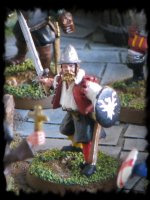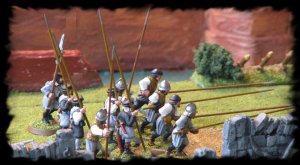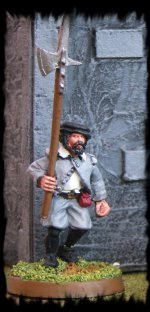|
Hand to Hand Melee doesn't actually change much for hundreds of years. A man with a sword sticking it into his opponent is pretty much the same in 6th and 16th century. As is a fellow armed with a pointy stick. However there are a few rules that apply to 16th century gaming that might not be mentioned in the various rule books. |
|
|
|
Pike Pike have become the main weapon of the infantry man on the battlefield. Its strength is in numbers and discipline. Pike use the rules from the LOTR main rule book, plus Pike armed troops can FORM A BLOCK
|
|
|
|
|
Bills The bill is the traditional Englishman's weapon. It was used to great effect before the pike came to England. If it was good enough to kill the King of Scotland it should be fine for any Spaniard. However by the late 16th century, bills have been reduced in use. Halberds are carried by sergeants and officers as a sign of rank and only peasants held in reserve use bills. They can still be a pretty useful weapon though Bills came in a variety of forms including halberds, bill hooks and pole axes. In game terms they work as Two Handed Weapons -1 on Attack Dice +1 on the to wound roll Canít be supported by pike
|
|
|
|
|
|
Sword and buckler This popular combination makes an excellent shock weapon. It takes a good deal of skill to use a buckler effectively, but it works well as an offensive weapon. A figure using Sword & Buckler gains +1A dice. If you are using the rules for BLOCKS Figures armed with Sword and Buckler add 1 to their Courage as they are armed specifically to take on blocks. |
 |
|
|
|



